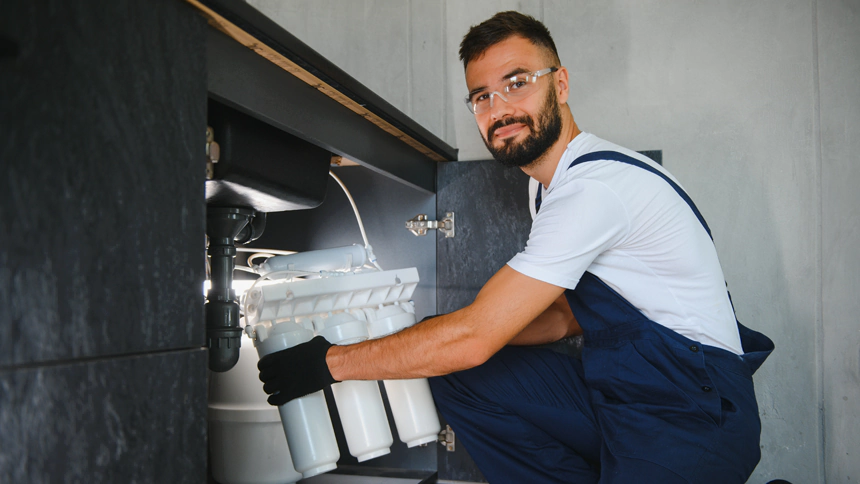Climate always has a profound impact on our plumbing systems. From their performance to longevity and reliability, climate can influence your plumbing in more than one way. This is even more the case in Australia, as the weather can range from arid heat waves in the outback to freezing temperatures in southern inland regions. That is why plumbing maintenance is a necessity for all Australian residents.
If you’re unsure how you can negate the climate effect on your plumbing, this guide will help you understand. Hot, old, humid, coastal, or hilly—you will understand how to protect your home by the end of this article.
So, first things first—
Summer Heat
Australia’s searing summer heat is well known around the world. While infrastructure across the country has evolved to deal with intense heat, plumbing systems remain vulnerable. Here is what to expect.
- Thermal Expansion and Cracked Pipes: When temperatures rise, metal and plastic pipes can expand. It is known as thermal expansion. If this phenomenon repeats frequently, it can cause stress on joints and fixtures, leading to cracking and water leaks.
- Dry Soil and Root Intrusion: Heatwaves often trigger extended dry spells, causing the soil around your home to shrink and shift. This adds stress to underground pipes and increases the risk of misalignment or cracks. Trees and large shrubs also send their roots deep into the underground pipes in search of moisture, causing root intrusion.
On the bright side, hot climates make solar hot water systems highly efficient and reduce energy bills. Thus, switching to solar can be a long-term solution for those in consistently warm climates.
Cold Weather
While most of Australia enjoys a temperate climate, regions such as Canberra and Bendigo experience freezing temperatures. Here’s what it means for your plumbing –
- Freezing Water and Burst Pipes: If water’s trapped in pipes overnight and temperatures drop below freezing, it can cause the frozen water to expand. This exerts enormous pressure and leads to pipe ruptures.
- Rust & Corrosion: Cold weather brings damp conditions, and this can lead to rust formation on exposed metal. If it’s unchecked, it can cause leaks and even contaminate your drinking water.
- Hot Water Demand: It is obvious that the demand for hot water is higher in colder weather. But this makes your system work harder, leading to higher electricity bills and wear on heating elements. Heat pumps are a smart alternative in this case—some of them can function effectively even at 10°C.
The Challenges of Humidity
If you reside in tropical or subtropical climates of Australia, here’s what your plumbing system is going through.
- Corrosion from Constant Moisture: The moisture in the air can accelerate the rusting and deterioration of your hot water system and pipe fittings. It can also increase the risk of mildew and mould.
A straightforward solution for this trouble is to choose a heat pump water heater. When installed with proper ventilation, it can prove to be energy-efficient and durable in humid climates.
Coastal Living
Living near the ocean is a dream for many, and locations like Scarborough make it happen. But this breezy lifestyle comes with its own set of plumbing challenges, like –
- Corrosion from Salt Exposure: Salt-laden air can be highly corrosive. It accelerates the breakdown of metal pipes, taps, and valves. Even stainless steel, known for its corrosion resistance, can also deteriorate over time.
- Sand Infiltration: Another common problem for coastal homes is sand. It can easily be tracked indoors or blown in by the wind, which ultimately enters your drains and water systems, potentially causing blockages.
Living in Hilly Areas
Do you live in an elevated area, such as the Point Cook or the Hillside? Then, you might keep an eye on –
- Low Water Pressure: Homes built at higher elevations often suffer from low water pressure due to the extra effort needed to pump water uphill. As a result, you will face weak water flow, slow-filling toilets, and underperforming appliances.
To counteract this, homeowners often install pressure booster pumps or water storage tanks at higher elevations. Pressure-regulating valves can also help maintain consistent flow.
Bushland and Rural Areas
Lastly, bushland and rural areas also have their challenges when it comes to plumbing. Here, the systems often include septic tanks, bore water, and municipal sewer, which can be more sensitive to weather patterns.
So, beware of:
- Drought and Septic Failures: Prolonged dry spells can dry out the soil around septic tanks, causing cracks. These fractures diminish the system’s efficiency in treating and filtering waste. On the flip side, torrential rains can flood the ground, overwhelming the system. This can result in frustrating backups and unwelcome overflows.
- Bore Water & Filtration: In the countryside where bore water flows, seasons play a pivotal role. When it rains, sediment levels can rise and, during dry spells, minerals and contaminants can concentrate.
Closing Thoughts
The bottom line is that your location and climate can significantly impact your plumbing health. But ensuring proactive maintenance can help you save a lot on repairs. Three key steps to be precise –
- Invest in systems suited for your climate.
- Keep up with regular maintenance.
- Call a licensed plumber at the first sign of issues.
To skip research and waiting, call our experts at Your Local Plumbing, as our services are widely available across Australia.



